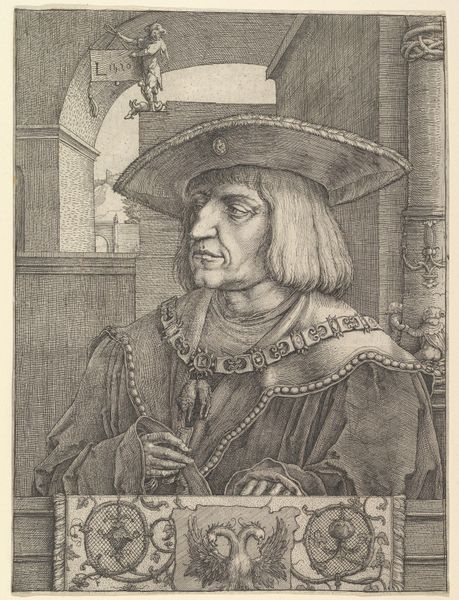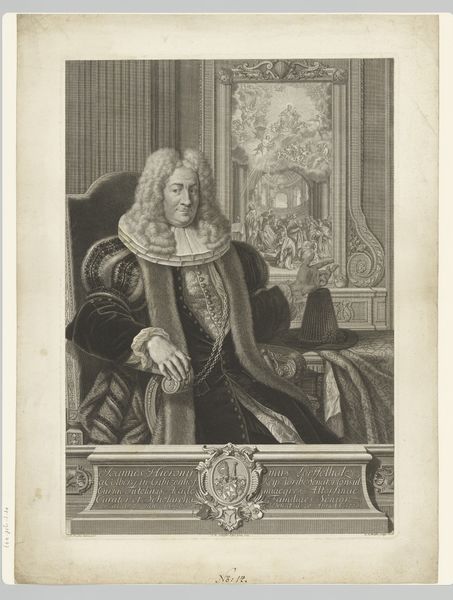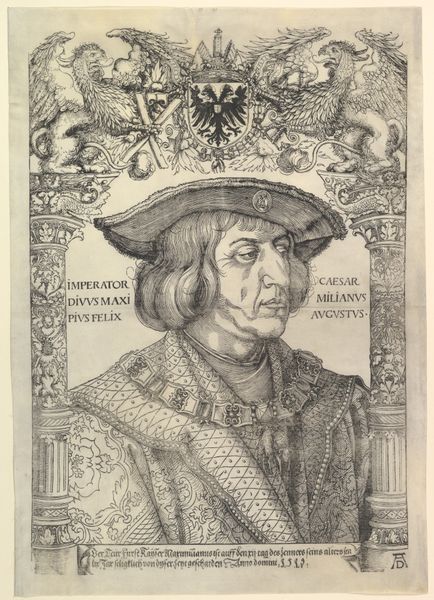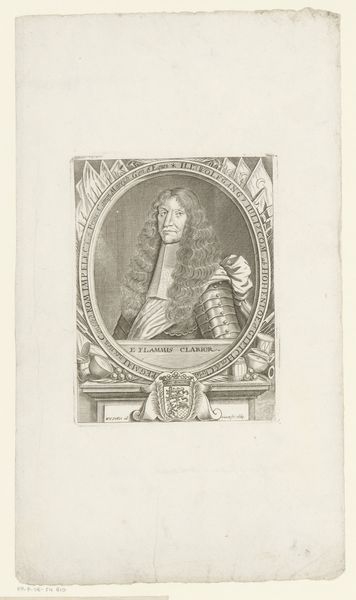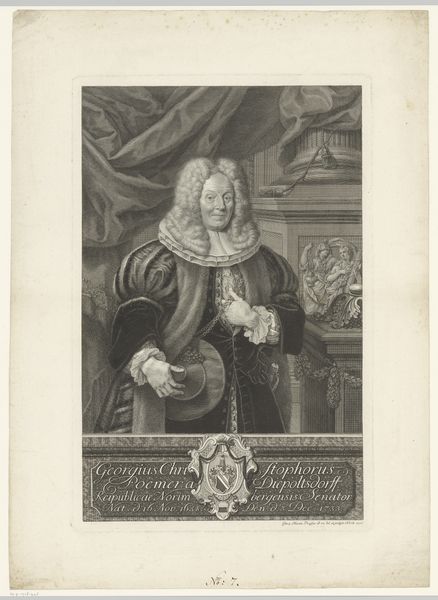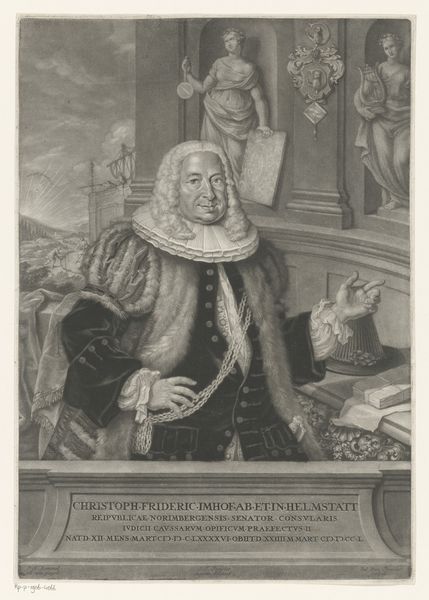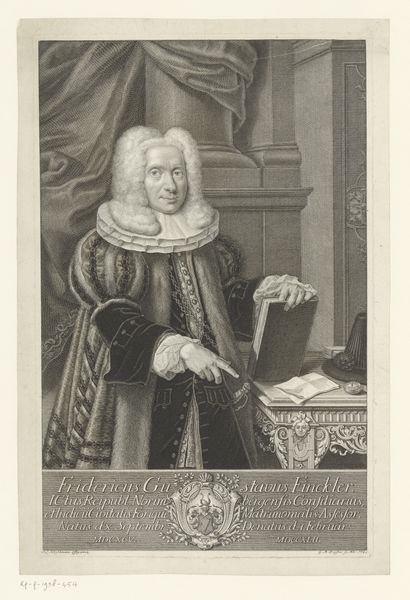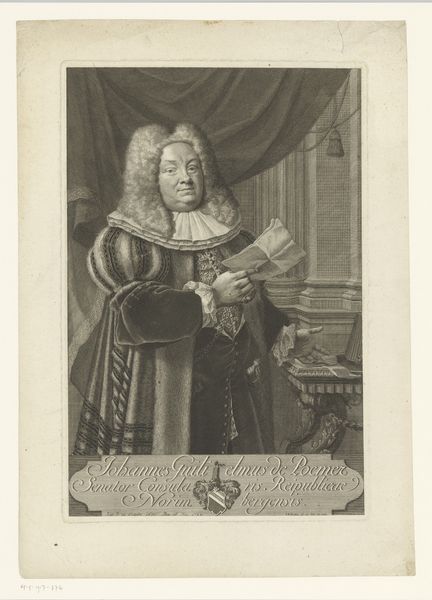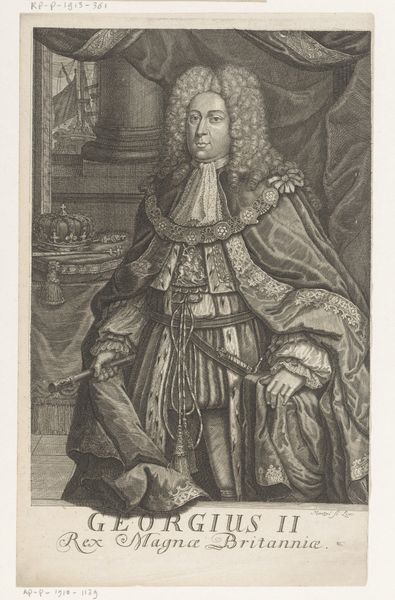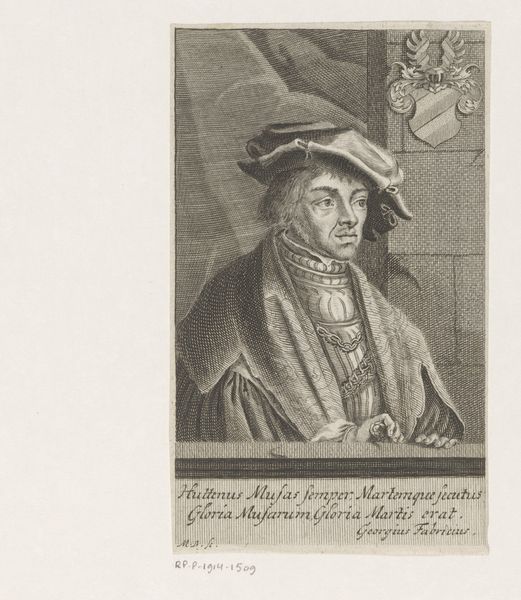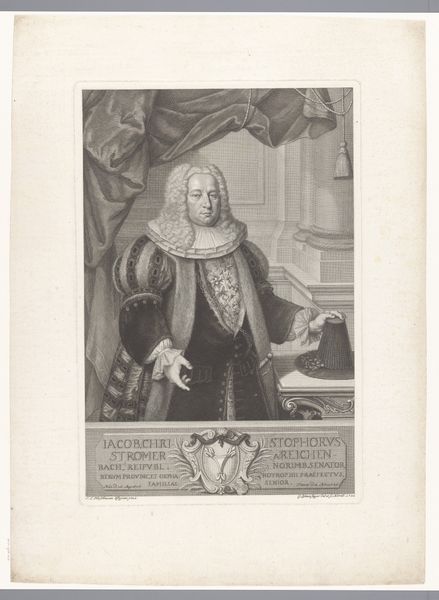
drawing, print, engraving
#
portrait
#
drawing
#
medieval
# print
#
line
#
history-painting
#
northern-renaissance
#
engraving
Copyright: Public Domain
This is Lucas van Leyden’s copy of a portrait of Emperor Maximilian I. Van Leyden created it sometime between 1510 and 1533 using engraving techniques. Consider the historical weight carried by portraiture, particularly of rulers like Maximilian. These images weren't just about likeness; they were carefully constructed to project power, legitimacy, and dynasty. Maximilian, Holy Roman Emperor, was a canny political player, a military leader, and patron of the arts. Van Leyden emphasizes his status through detailed rendering of Maximilian’s garments and the heraldry displayed in the artwork. What does it mean for an artist like van Leyden to create a copy of a portrait? Does it democratize the image? Does it serve as a form of flattery? Or, is it simply an economic transaction? Consider the power dynamics at play in the creation and circulation of images during this time. This engraving invites us to reflect on how identity and power were visually constructed and disseminated in the 16th century.
Comments
No comments
Be the first to comment and join the conversation on the ultimate creative platform.
